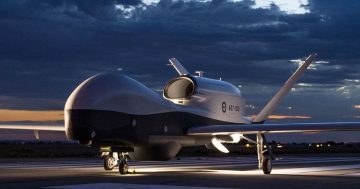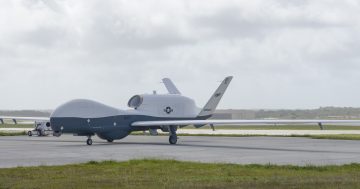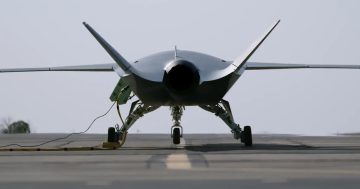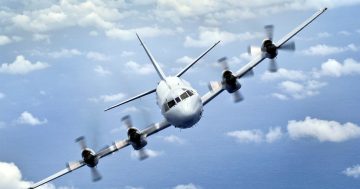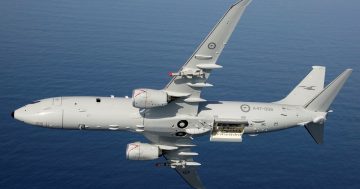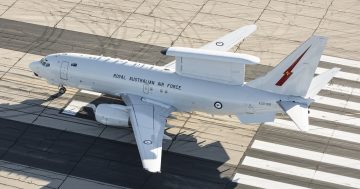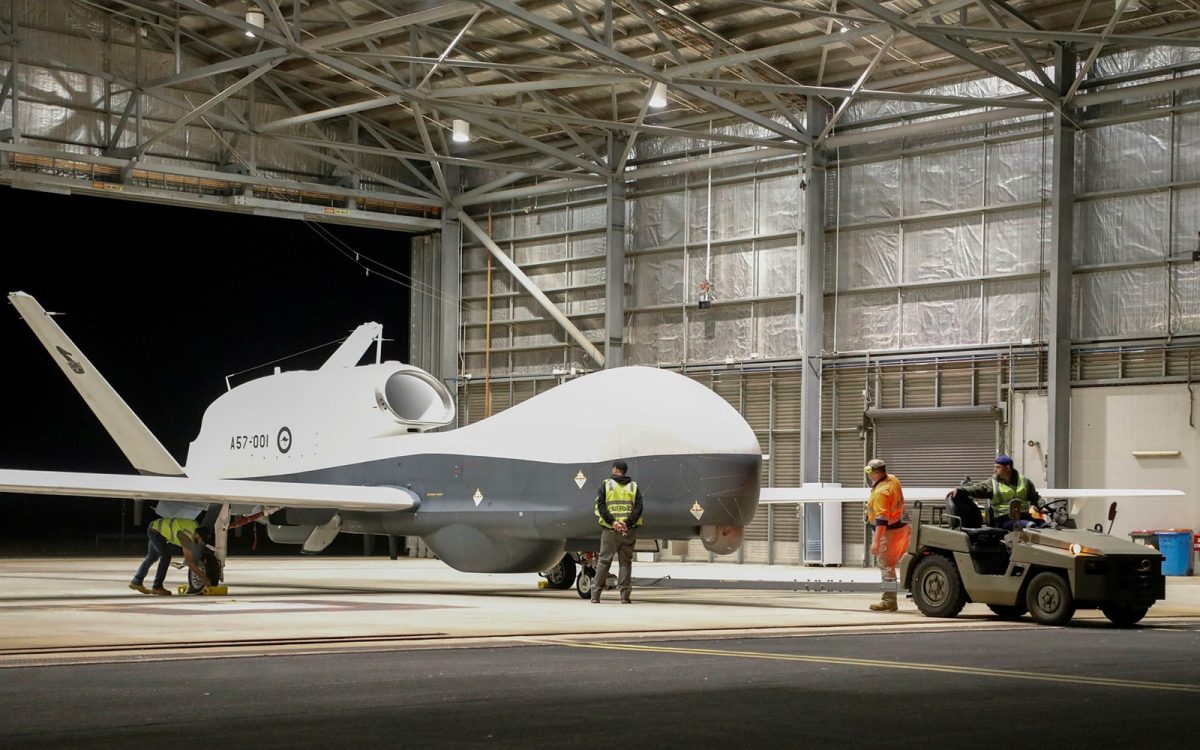
AUS1 is towed into its hangar after arriving at RAAF Tindal early Sunday morning. Photo: ADF.
The first of at least four large uncrewed maritime reconnaissance aircraft for the Royal Australian Air Force arrived in Australia before dawn on Sunday morning (16 June).
The Northrop Grumman MQ-4C Triton – dubbed AUS 1 – departed Point Mugu Naval Air Station near Los Angeles in California Thursday evening local time and made the trans-Pacific delivery flight via Wake Island to RAAF Tindal near Katherine in the Northern Territory.
Following an initial flight test campaign from Palmdale in California, the remotely piloted aircraft had spent the past four months at the US Navy’s Patuxent River in Maryland for final testing and fit-out. On 7 June, the aircraft was then ferried to Point Mugu to prepare for the long delivery flight to Australia.
The delivery followed the arrival in January of a mobile forward operating base (FOB) for the aircraft – essentially a semi-trailer containing a mission ground station (MGS) – to Tindal. It is planned all of the RAAF’s Tritons will be based at Tindal once a large expansion of that base’s facilities is complete in 2026.
Being an uncrewed aircraft the size of a 737, the Triton will rarely overfly populated areas, although a much-delayed sense and avoid (SAA) radar is planned to be installed and certified to allow it to operate in controlled airspace in the future.
Therefore, Tindal will be the aircraft’s home base for the foreseeable future due to its remoteness, as well as its proximity to the Triton’s expected main area of operations, while pilots and sensor operators of the RAAF’s newly reformed No 9 Squadron will operate the aircraft from the mobile MGS, or a fixed ground station located at RAAF Edinburgh in Adelaide.
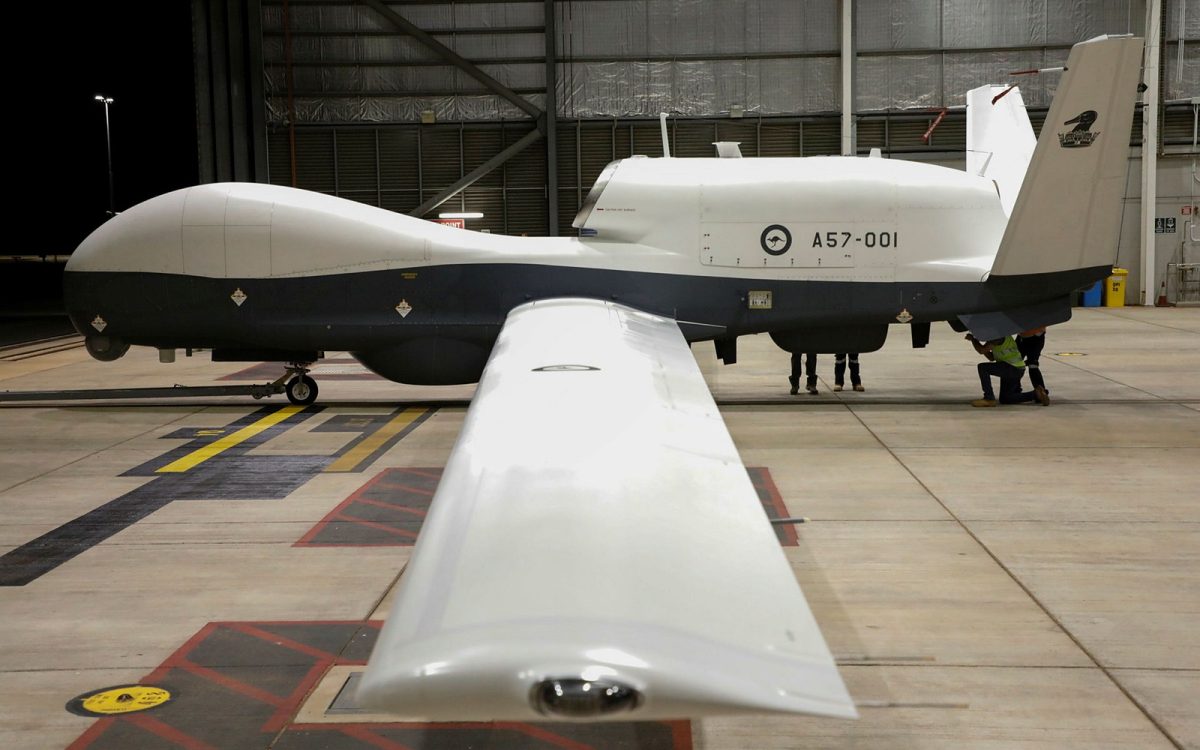
The glider-like wing gives the Triton an operating altitude above 50,000 feet and a mission endurance of 28 or more hours. Photo: ADF.
Director – Future Intelligence, Surveillance and Reconnaissance (ISR) Systems Program Office in Capability Acquisition and Sustainment Group (CASG) Group Captain Andrew Leahy said project milestones have been delivered at pace to ensure the RAAF is ready to receive and operate the Triton.
“These events form part of a complex series of processes, systems and technologies that have been integrated in preparation for AUS 1’s arrival on home soil and in support of the additional aircraft that will be delivered to complete the RAAF MQ-4C Triton fleet,” he said.
Head of Air Force Capability, Air Vice-Marshal Wendy Blyth said RAAF pilots, sensor operators and maintenance crews had also been busy training on the aircraft in the US, primarily at Jacksonville in Florida, the US Navy’s main east coast Triton operating base.
“These personnel received the same training as their USN counterparts and gained valuable experience to ensure that the Air Force is able to deploy the Triton effectively,” she said.
The challenges of introducing the Triton into service have been many. Based on the RQ-4B Global Hawk flown by the US Air Force, Japan and NATO, the Triton has been optimised for the maritime reconnaissance mission.
Changes for the maritime role include a strengthened airframe, de-icing on the wings and engine inlet, a powerful radar, maritime modes for the MTS-B electro-optical sensor, and a comprehensive MULTI-INT system able to listen to and categorise adversary electronic emissions.
The US Navy conducted a successful early operational capability deployment of two Tritons to the Pacific island of Guam from late-2019, and is now deploying operational Tritons to Guam, Japan and to the Mediterranean region where they have been spotted on flight trackers monitoring the contentious Black Sea region.
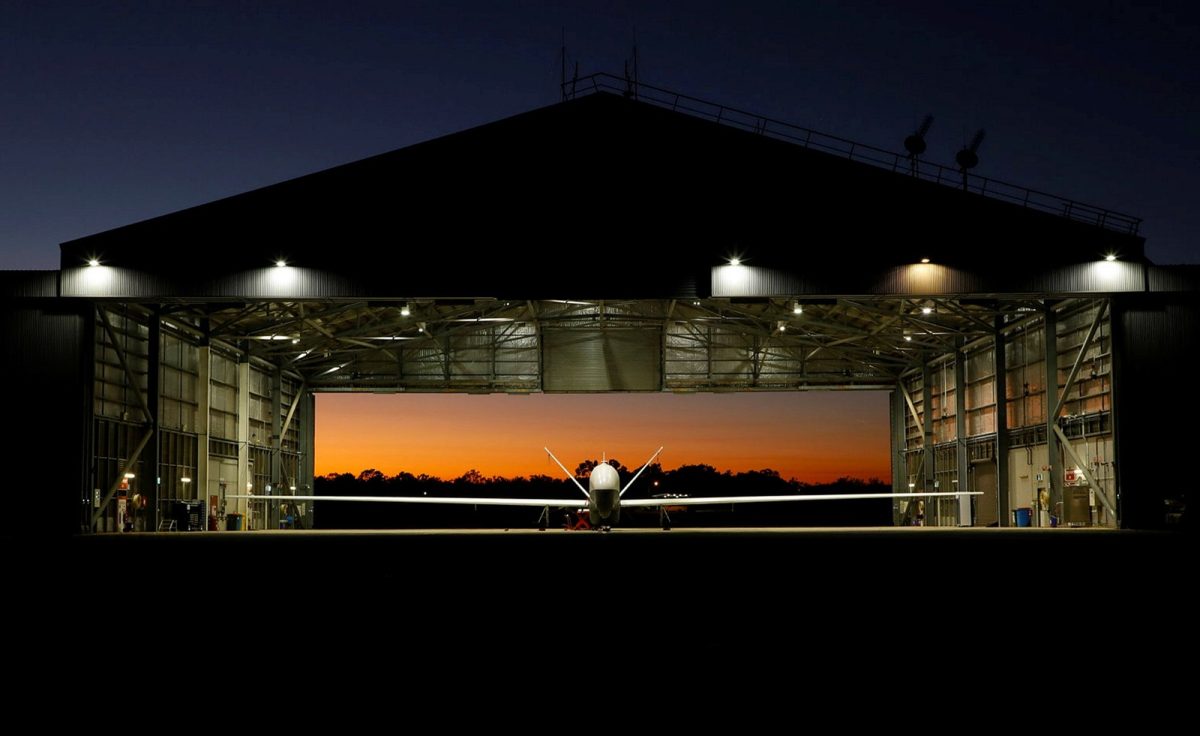
The four Tritons on order will be based at Tindal near Katherine in the NT, close to its expected area of operations. Photo: ADF.
However, the US Navy’s plan to acquire as many as 68 Tritons has been drastically scaled back to less than 30 aircraft in recent years, and development has been delayed due to funding constraints.
Similarly, Australia’s original plan to acquire “up to seven” Tritons is currently stalled at four, all of which have been ordered as single units spread over a number of years.
The RAAF is a cooperative development partner with the US Navy on the Triton program, giving Australia valuable engineering input and a seat at the table when decisions on the capabilities and configuration of the system have been made. The RAAF’s AUS 1 was rolled out in November 2022 and made its first flight in November 2023.
The value of a high altitude long endurance (HALE) maritime UAS can’t be overstated. The maritime border security mission is one such application, as is protecting Australia’s vast Antarctic territories from illegal fishing and other activities.
But the Triton’s primary mission will be to patrol Australia’s northern approaches, mainly through the Indonesian archipelago and up into the South China Sea, and to provide overwatch from above 50,000 feet for Royal Australian Navy and allied vessels transiting these areas.
The glider-like aircraft can survey tens of thousands of square kilometres in a single 28-hour mission and provide real-time visual and electronic data back to Australia via satellite.
“The MQ-4C Triton will deliver unprecedented persistence and awareness over the maritime domain in support of the Integrated Force,” Air Vice-Marshal Blyth said.
“This will significantly enhance our ability to persistently patrol Australia’s north and north-western approaches – in the southwest Pacific and south to Antarctica.”












